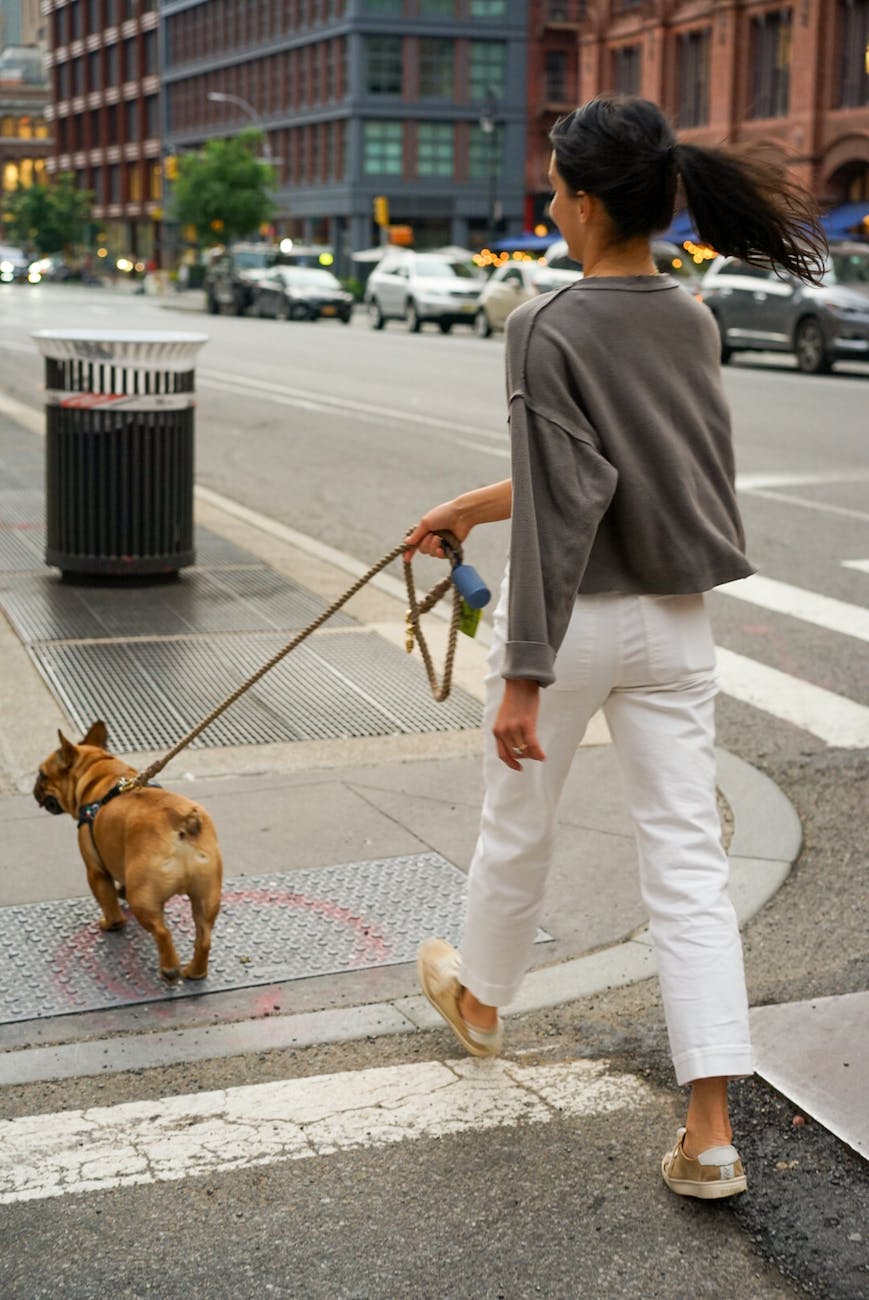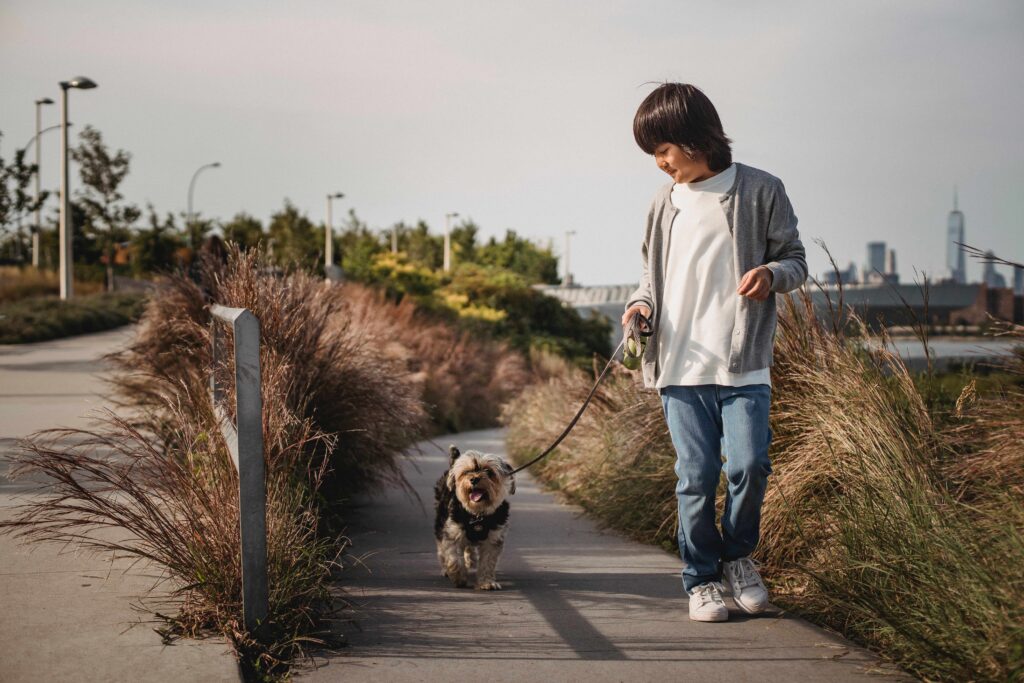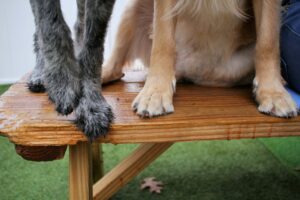Find Tips & Tools
to understand your dog better
Help! My Old Dog’s Back Legs Aren’t Working: A Guide to Caring for Your Aging Dog’s Joint Health

Have you ever noticed your four-legged buddy struggling with those back legs lately? Well, you’re not alone. As dogs grow older, it’s common for their hindquarters to show signs of wear and tear, making everyday activities like standing, walking, and climbing stairs a bit more challenging. Aging is an inevitable part of life for both humans and our beloved hounds, but there are effective ways to support your dog’s joint health and enhance their golden years with the right knowledge on senior dogs joint care.
Understanding Age-Related Joint Issues in Our Dogs
As our loyal canine companions grow older, their joints begin to show signs of wear and tear, resulting in discomfort, stiffness, and challenges with their once-easy strolls. Recognizing the reasons behind and the telltale signs of these joint issues is the first step in senior dog joint care. It is the part and parcel of ensuring your furry friend enjoys their golden years without unnecessary discomfort.
They often face common joint conditions like osteoarthritis, most commonly known as arthritis in dogs. Osteoarthritis in dogs is a common degenerative joint condition characterized by inflammation and deterioration of the cartilage within their joints. This condition leads to pain, stiffness, and reduced mobility, causing discomfort during movement. Over time, the joints become less flexible, making simple activities like walking or climbing stairs challenging for affected dogs.
You can be their hero in this journey by actively managing and preventing these joint issues. As your dog matures, their needs evolve. Prioritizing their joint health, ensuring an optimal weight, providing suitable exercise and supplements, and collaborating closely with your veterinarian can all contribute to a happy, pain-free, and golden stage of life for your beloved pet. It’s a remarkable way to repay the boundless love and joy they’ve shared with you over the years.
Signs your Senior Dog May Have Arthritis
As our loyal companions embrace their later years, you might notice the occasional wobbles in their back legs, particularly when it comes to standing up or tackling staircases. This usually serves as a subtle cue that arthritis is making an entrance, a common visitor in the world of senior dogs, varying in intensity from mild to severe. The comforting news is, there are avenues to provide relief and decelerate its progress.
Recognizing these signs of arthritis in your dog’s back legs is key:
- Wrestling with the act of standing, walking, stair-climbing, or taking that leap of faith, often accompanied by leg wobbles or sudden giving way.
- Morning stiffness or sluggishness after periods of rest, with a lengthier startup time.
- An obvious limp or a tendency to favor one leg, avoiding pressure on a tender joint.
- Gradual muscle loss in the hind limbs as moving becomes a tad more challenging.
- Touch-sensitive, marked by yelps of discomfort when their back legs are gently extended or flexed.
While the aging process is an unalterable fact, the right care and the addition of scientifically-backed supplements can work wonders in preserving your dog’s mobility and comfort for years to come. Recent studies have spotlighted the benefits of products containing UC-II collagen, which have shown promise in diminishing inflammation and alleviating pain far more effectively than the commonly recommended glucosamine and chondroitin.
Now, the question is: isn’t your faithful companion worth the investment? Extend a helping hand to them by embarking on a joint care regimen today. Your dog’s back legs – and that ever-wagging tail – will undoubtedly thank you for it!
Key Steps to Support Your Dog’s Joint Health
As our faithful companions age, it’s only natural for their joints to face the effects of time. While we can’t halt the ageing process, we certainly can take steps to support their joint health and overall mobility. Is it ever too late when the signs and symptoms start becoming evident? Absolutely not. Even at this stage, lifestyle adjustments and the introduction of supplements can make a world of difference in ensuring their comfort during their golden years.
Weight Management
One of the most impactful changes you can make is to manage their weight. Excess pounds place undue stress on their joints. Measure out their meals, maintain a consistent feeding schedule, and consider transitioning to a weight management dog food formula. You’d be surprised at how a slight reduction in weight can lead to significant improvements.
Senior Dog Exercise for joint health

While you might be concerned about pushing your furry friend too hard, exercise remains a vital component for joint health – it’s all about striking a balance. High-impact activities should be moderated, and walks are best limited to around 30 minutes, a couple of times a day. Don’t hesitate to ask your veterinarian for specific advice to your dog.
Swimming and hydrotherapy offer the perfect combination of resistance and gentleness for ageing joints. Additionally, specialized harnesses can help distribute pressure evenly during walks. It’s advisable to consult your vet for appropriate exercise recommendations tailored to your dog’s specific needs.
Orthopedic Bedding
For optimal comfort, provide an orthopedic foam bed. These beds offer cushioning for joints and help alleviate pressure points. Elevated beds, ramps, and steps can further assist your dog in getting up and down with ease.
Joint Care Supplements
Introducing your dog to joint support supplements enriched with potent ingredients like UC-II, Omega-3, and curcumin proves invaluable in the quest to minimize inflammation, shield cartilage, and stimulate its growth. Our recommendation? The JOPE Hip & Joint chews, imported straight from the USA, which has demonstrated its ability to alleviate chronic pain in joints. Thousands of senior dog owners have witnessed substantial improvements in joint health, activity level, and quality of life within a mere 3-6 weeks of daily use.
These chews tackle joint stiffness, achiness, and pain in older dogs. They stand out because they employ bioavailable UC-II collagen.
- A daily serving of 1-3 chews, adjusted according to your dog’s size, can lead to impressive results.
- Expect to observe enhanced mobility and less limping within the initial 3-6 weeks, with substantial pain relief occurring around the 2-3-month mark.
- It’s noteworthy that JOPE chews are manufactured in the USA and adhere to stringent safety and quality standards. They contain only natural ingredients and are third-party tested to ensure the quantity of active ingredients.
For supplementary benefits, you can explore joint support medication under the guidance of your vet for senior dog joint care tips. Initiating a joint supplement like JOPE chews can be the game-changer for slowing the progression of arthritis and ensuring your best friend remains active and mobile for an extended duration.
Apply Heat/Cold
The application of heat or cold to alleviate sore joints can offer swift respite from pain and the reduction of inflammation. You’ve got options, including heating pads, warm compresses, ice packs, or cooling pads, which can be placed on the afflicted joints for 10-15 minutes, several times a day. Warm pads might be recommended to start your dog’s day and prevent morning stiffness before a walk. Conversely, cold pads could be beneficial after exercise to help reduce joint inflammation. Always keep a watchful eye to prevent any risk of overheating or chilling and, as a prudent step, always seek advice from your veterinarian.
Consult Your Vet
When your dog presents signs of arthritis or other joint concerns, it’s paramount to consult your trusted vet. They possess the expertise to thoroughly examine your dog, carry out any essential tests, and can, if required, prescribe medications for pain relief or inflammation management. Additionally, your vet is best equipped to formulate a bespoke care plan that caters to your dog’s unique needs, ensuring they remain as comfortable and active as possible during their golden years. Remember, early diagnosis and intervention are pivotal for the effective management of joint issues in senior dogs. Feel free to discuss Jope with your vet and inquire about their opinion regarding the ingredients and their quality.
By staying diligent with your dog’s supplements, exercise regimen, pain management, and regular veterinary check-ups, you are taking the finest steps towards enhancing the quality of your shared time together. Cherishing each moment remains the ultimate key to making a world of difference.
In summary, you now possess a set of essential steps to maintain the joint health and happiness of your aging dog. While it might initially appear to be a significant effort, the rewards of having your beloved companion by your side for an extended period make every measure worthwhile. Do right by your furry friend and commence implementing these guidelines today. Before you know it, you’ll have your pup back to their joyful jumping, playful antics, and those cherished long walks together, just like old times. And if your dog’s joints require an added boost, consider a supplement like JOPE Hip & Joint chews, find out more about UC-II & JOPE chews here. Packed with only the essential natural ingredients, JOPE can swiftly restore your dog’s vitality, enhancing their mobility and flexibility. The icing on the cake? They absolutely relish the taste, so there’s no need for any force-feeding. Give your dog the gift of comfort and longevity – their unconditional love deserves nothing less.


